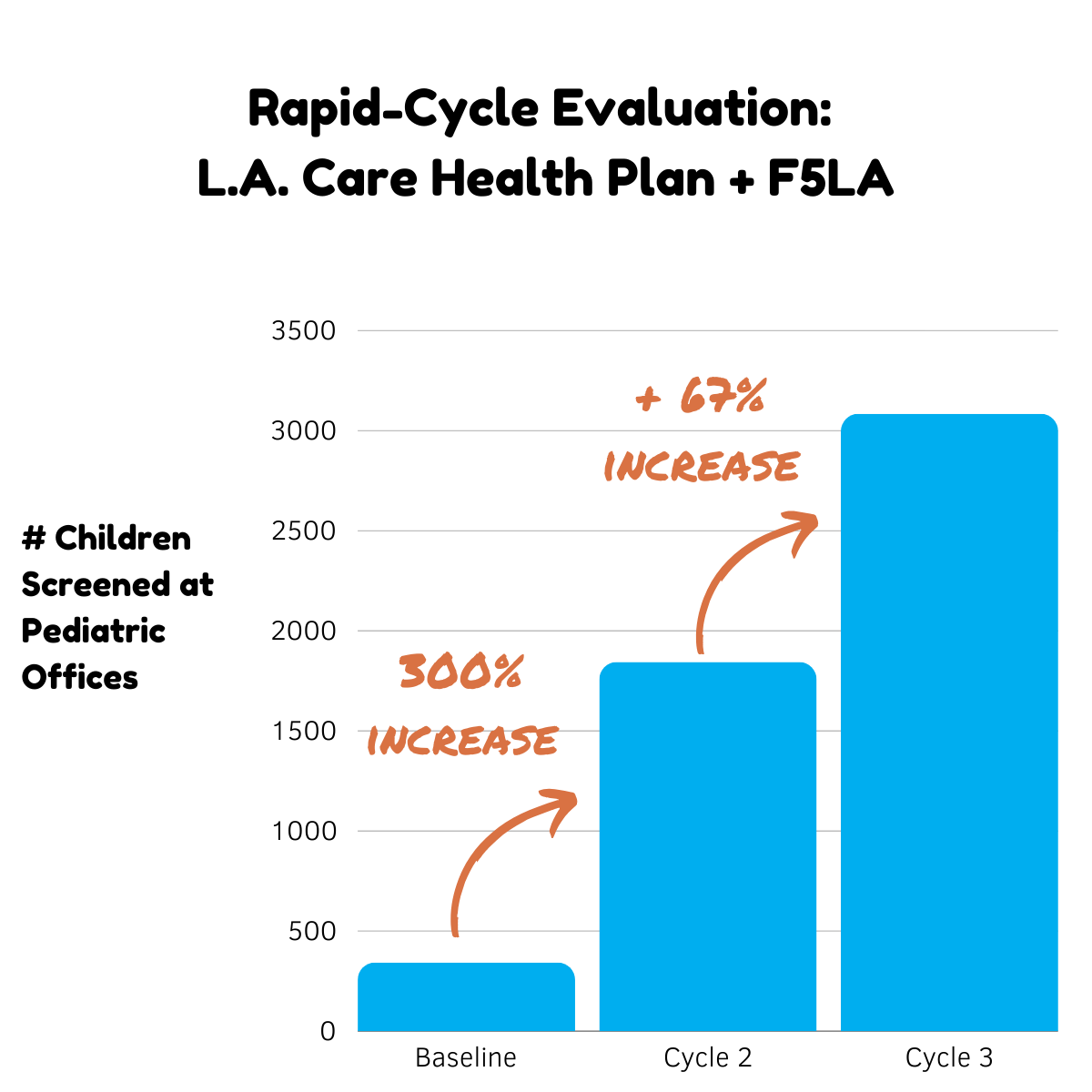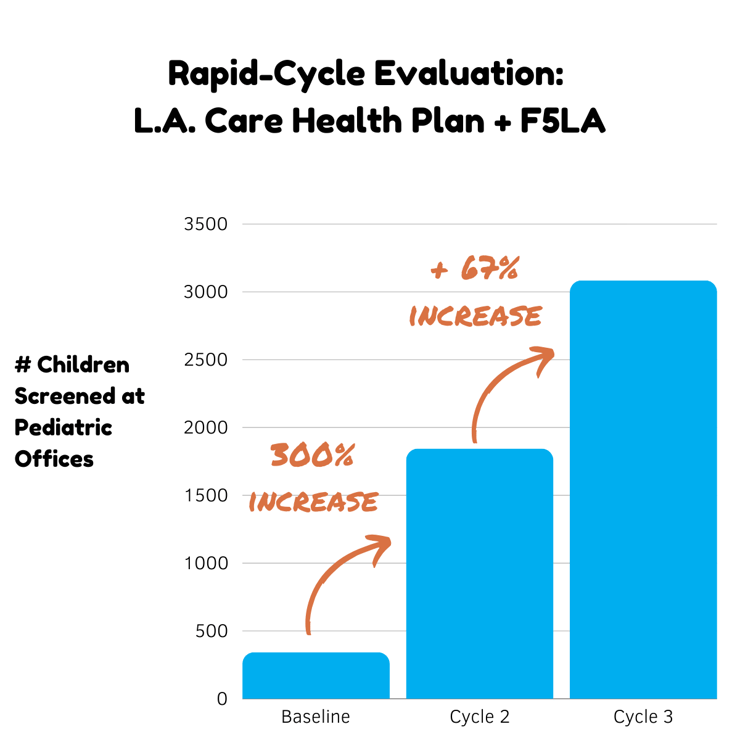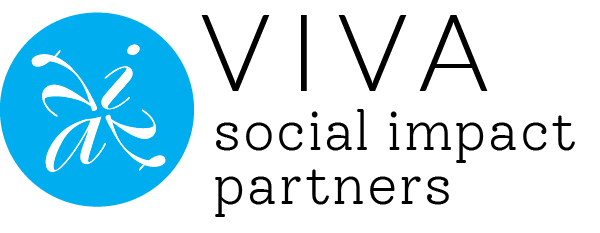1 min read
L.A. Care: Rapid Cycle Evaluation of Managed Care Practices
Noa Elliott
May 15, 2024
Case Study

The Challenge
Wide health care disparities exist based on race and other factors. Closing these disparities and improving health outcomes has life-long benefits for everyone. With over 2.4 million members, L.A. Care is a large managed care provider. Managed care plans have large volumes of patient data that can be analyzed for insights to promote optimal outcomes. VIVA was selected to work in partnership with L.A. Care, physician practices, and others to design and implement a rapid cycle evaluation to inform systems refinements and improve member health and development outcomes.
Can a partnership approach to rapid cycle evaluation result in improved health outcomes?
The Approach
VIVA convened L.A. Care and its partnering medical practices to engage in an evaluation planning process grounded in stakeholder experiences and feedback. Through collaborative planning sessions, stakeholder focus groups, and document review, VIVA drafted a comprehensive evaluation plan. The plan uses an iterative, rapid cycle evaluation approach to answer key questions about the implementation of L.A. Care partners’ developmental screening and referral processes and subsequent member-level health outcomes. Rapid cycle evaluation is an approach that uses innovative designs and methods to quickly test program components and provide actionable results–which are then quickly implemented and further tested.
Key goals for our work included:
- Helping L.A. Care and its partners understand which of their approaches were working, and which weren’t.
- Centering community experiences throughout the learning and decision-making processes, so that recommendations were informed by the community.
- Facilitating a Continuous Quality Improvement (CQI) process in which partners could be agile and able to make changes along the way based on learnings.
Our rapid cycle evaluation process included the following phases:
- Cycle 1: Pilot evaluation and collect baseline data
- Cycle 2: Measure implementation of updated activities
- Cycle 3: Capture early indicators of change
Quantitative and qualitative data collection and sensemaking meetings with partners and stakeholders are leading to significant learnings–and tangible results–in a short period of time. That includes a 300% increase in providing the target service, developmental screenings, from the baseline to Cycle 1 and an additional 67% increase between Cycles 1 and 2. That’s an increase from 342 screenings prior to the project to over 3000 screenings by the end of Cycle 2.
We have also been able to identify data gaps, and work together with L.A. Care and the partnering medical practices to build capacity to collect all of the demographic data desired to disaggregate for deeper learning over the course of the evaluation cycles.

